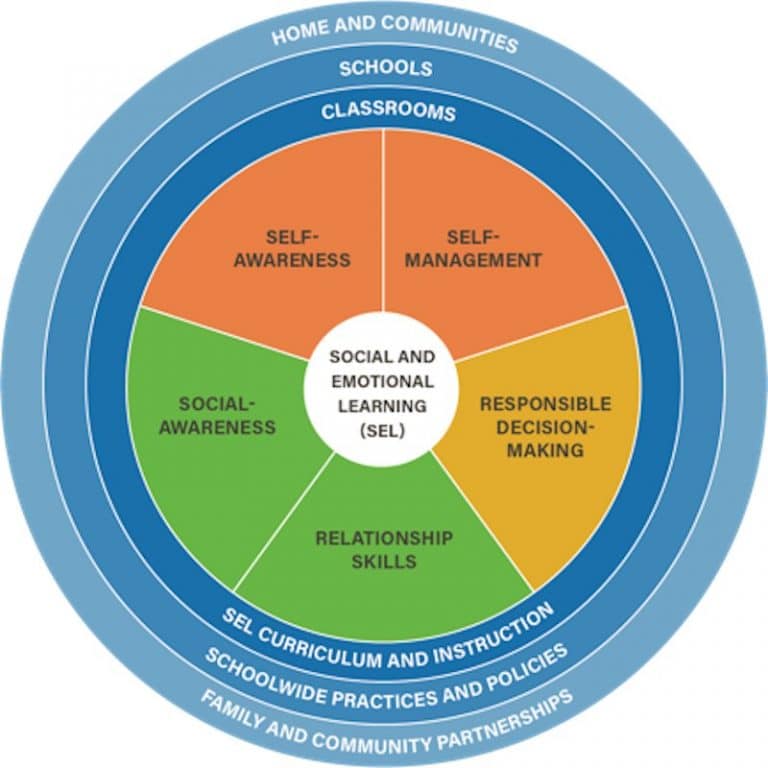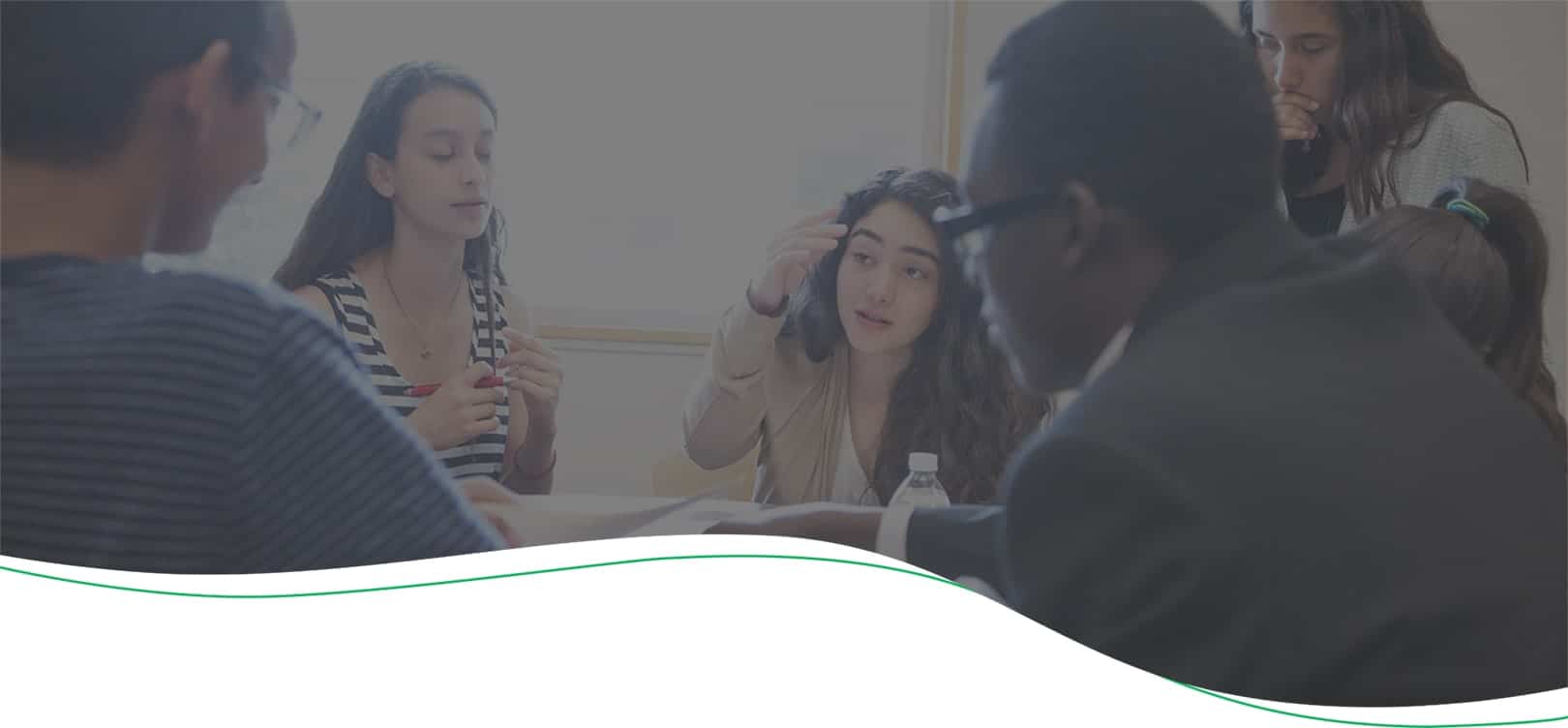
04 Jul What is Social-Emotional Learning and Why is it so Important?
Since the pandemic, distance learning has become more and more common. Teachers and parents are tasked with how to cultivate the social and emotional skills of their students, in addition to their academic ones. But even before online learning, educators have begun to see the rewards of implementing life skills into curriculums to better prepare their students for future success. Social and emotional learning is no longer a buzzword; it is now widely considered to be one of the most fundamental elements of an effective education. And it’s becoming even more widespread—being considered in workplaces, helping companies shape healthier working environments. So what is social-emotional learning?
Defining SEL
What is social-emotional learning?
Social-emotional learning (or SEL) lays the foundation for positive learning environments, but also for future career and life successes for the students.
SEL Definition
What's SEL?
Social-emotional learning is a process where children and adults develop and successfully apply the skills and knowledge to understand and control emotions, show empathy to others, develop healthy relationships, set positive and realistic goals, and make sound decisions. These skills may include self-control, self-awareness, and emotional management, responsible decision making, and relationship skills.
Social emotional learning competencies :
- Self- awareness: The ability to identify one’s thoughts, emotions, and influences on their behavior, as well as analyze their own strengths and weaknesses.
- Self-management: The ability to control one’s own thoughts, emotions, and behavior in a way that is appropriate to their given situation.
- Social awareness: The ability to empathize with others and expand their perspective to those from different backgrounds and cultures
- Self-awareness: The ability to establish and cultivate healthy relationships with individuals and groups
The cultivation of these SEL skills can create a more peaceful education and professional setting where everyone can thrive. Socio-emotional learning engages the individual’s relationship with themselves, and how they interact with others. One key aspect of SEL is self-management, which requires the engagement of your own emotions and attitudes in order to regulate one’s behavior. But SEL engages an individual’s behavior within a larger community, as relationship skills and conflict negotiation are key elements of the social and emotional learning framework. Watch more below.
Below is a visual that explains the different components of social-emotional learning, as well as the different levels of instruction that help cultivate these skills from CASEL.

Why is Social Emotional Learning Important?
Why consider SEL?
SEL is vital as it teaches students how to engage with their entire world with more respect and understanding. SEL can also give its students the framework to develop healthy self esteem, improve their mental health by reducing depression and stress. Additionally, social-emotional learning equips students to engage in an increasingly multicultural environment.
There is research that proves the benefits of SEL teaching. According to CASEL, or the Collaborative for Academic, Social, and Emotional Learning, there are 213 studies that indicate that students who participated in SEL programs increased their GPA by 11%.
In the classroom, SEL programming decreased the student dropout rates by about 12% and lessened behavioral issues. Specifically, physical aggression alterations decreased about by 42%, and bullying among students with disabilities decreased by 20%.
Outside of the class, socio-emotional learning programming has been found to decrease the rates of drug use, teen pregnancy, and criminal activity in students. SEL undoubtedly improves the quality of life for the student and their ability to succeed in school and beyond.
SEL Learning
Implementing SEL in the classroom
Teaching Social-emotional learning at home and in the classroom is easy as ever, especially since these skills are universally utilized. Some quick and efficient ways to start is to create classroom policies that engage with SEL skills. A fantastic way to implement SEL learning at the beginning of the day is to start with a check-in, addressing the emotions and thoughts of each student before starting the standard curriculum of the day.
At Women Wonder Writers (WWW), our version of the check-in is called “unlock the week.” Women Wonder Writers has our own creative arts and social emotional curriculum, The Write of Your Life (TWOYL). “Unlock the week,” asks each student to share their high or low of the week. By asking them about their life, the students must engage with SEL, and practice their self-awareness as they consider their own emotional and mental state, as well as social awareness as they listen to their peers’ check-in.
Other examples include rewarding demonstrations of kindness, and offering positive affirmation when these skills are being openly used. When it comes to discipline after poor behavior, a teacher or parent can use the language of social-emotional learning to respond to the incident. Rather than punishment through expulsion or detention, a teacher can engage in dialogues that teach empathy, problem-solving, or impulse control. Group projects are another exciting way to teach SEL, as it can encourage responsible decision making and social awareness.
SEL’s Real World Impact
Social-emotional learning works
Fostering social-emotional learning at a young age has been proven to be beneficial to both the student and the learning environment. For the student, SEL creates an early sense of purpose and self-confidence. For the classroom or home, it creates a more equitable, positive learning environment that encourages further student engagement. SEL has been proven to improve the student’s academic performance and attendance. Social emotional learning is the first step for the student’s academic success and sense of inner well-being.
If you are interested in learning more about what a social-emotional learning curriculum looks like, check out The Write of Your Life! This curriculum specializes in SEL skills of tolerance, empathy, and healthy self-expression. This twelve-week course teaches SEL skills, while also teaching the tools to build resilience.
UP NEXT
Defining and Conducting Restorative Circles
Building resilience inside the classroom takes work every single day. Engaging in dialogue regularly teaches empathy and conflict resolution. One fairly effective restorative practice that does this well, is the restorative circle. Learn more in our next article.


